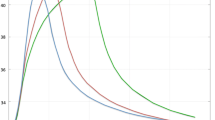Abstract
In a previous study, we investigated the contribution of the surface of the face, chest, abdomen, and thigh to thermal comfort by applying local temperature stimulation during whole-body exposure to mild heat or cold. In hot conditions, humans prefer a cool face, and in cold they prefer a warm abdomen. In this study, we extended investigation of regional differences in thermal comfort to the neck, hand, soles, abdomen (Experiment 1), the upper and lower back, upper arm, and abdomen (Experiment 2). The methodology was similar to that used in the previous study. To compare the results of each experiment, we utilized the abdomen as the reference area in these experiments. Thermal comfort feelings were not particularly strong for the limbs and extremities, in spite of the fact that changes in skin temperature induced by local temperature stimulation of the limbs and extremities were always larger than changes that were induced in the more proximal body parts. For the trunk areas, a significant difference in thermal comfort was not observed among the abdomen, and upper and lower back. An exception involved local cooling during whole-body mild cold exposure, wherein the most dominant preference was for a warmer temperature of the abdomen. As for the neck and abdomen, clear differences were observed during local cooling, while no significant difference was observed during local warming. We combined the results for the current and the previous study, and characterized regional differences in thermal comfort and thermal preference for the whole-body surface.







Similar content being viewed by others
References
Arens E, Zhang H, Huizenga C (2006a) Partial- and whole-body thermal sensation and comfort—Part I: Uniform environmental conditions. J Therm Biol 31:53–59
Arens E, Zhang H, Huizenga C (2006b) Partial- and whole-body thermal sensation and comfort—Part II: Non-uniform environmental conditions. J Therm Biol 31:60–66
Attia M, Engel P (1982) Thermal pleasantness sensation: an indicator of thermal stress. Eur J Appl Physiol 50:55–70
Attia M, Engel P, Hildebrandt G (1980) Quantification of thermal comfort parameters using a behavioural indicator. Physiol Behav 24:901–909
Bisgard JD, Nye D (1940) The influence of hot and cold application upon gastric and intestinal motor activity. Surg Gynecol Obstet 71:172–180
Cabanac M (1971) Physiological role of pleasure. Science 173:1103–1107
Chatonnet J, Cabanac M (1965) The perception of thermal comfort. Int J Biometeorol 9:183–193
Cotter JD, Taylor NA (2005) The distribution of cutaneous sudomotor and alliesthesial thermosensitivity in mildly heat-stressed humans: an open-loop approach. J Physiol 565:335–345
Gagge AP, Gonzalez RR (1996) Mechanisms of heat exchange: biophysics and physiology in environmental physiology. In: anonymous handbook of physiology, Oxford University Press, New York, pp 45–84
Hardy JD, DuBois EF (1938) The technic of measuring radiation and convection. J Nutr 15:461–475
Hensel H (1981) Thermoreception and temperature regulation. Academic Press, London
Hosono T, Takashima Y, Morita Y, Nishimura Y, Sugita Y, Isami C, Sakamoto I, Tagami K, Hidaka Y, Suzuki A (2010) Effects of a heat- and steam-generating sheet on relieving symptoms of primary dysmenorrhea in young women. J Obstet Gynaecol Res 36:818–824
Kuno S, Ohno H, Nakahara N (1987) A two-dimensional model expressing thermal sensation in transitional conditions. ASHRAE Trans 93:396–406
Kuntz A (1945) Anatomic and physiologic properties of cutaneo-visceral vasomotor reflex arcs. J Neurophysiol 8:421–429
Kuntz A, Haselwood LA (1940) Circulatory reactions in the gastrointestinal tract elicited by localized cutaneous stimulation. Am Heart J 20:743–749
Marks LE, Stevens JC, Bartoshuk LM, Gent Jf, Rifkin B, Stone VK (1988) Magnitude-matching: the measurement of taste and smell. Chem Senses 13:63–87
Maruyama Y, Tamura T (1989) Responses of skin temperature and thermal sensation to unevenly distributed thermal stimuli. Jpn J Biometeor 26:143–154
Morrison P (1966) Insulative flexibility in the guanaco. J Mammal 47:18–23
Mower GD (1976) Perceived intensity of peripheral thermal stimuli is independent of internal body temperature. J Comp Physiol Psychol 90:1152–1155
Nakamura M, Esaki H, Yoda T, Yasuhara S, Kobayashi A, Konishi A, Osawa N, Nagashima K, Crawshaw LI, Kanosue K (2006) A new system for the analysis of thermal judgments: multipoint measurements of skin temperatures and temperature-related sensations and their joint visualization. J Physiol Sci 56:459–464
Nakamura M, Yoda T, Crawshaw LI, Yasuhara S, Saito Y, Kasuga M, Nagashima K, Kanosue K (2008) Regional differences in temperature sensation and thermal comfort in humans. J Appl Physiol 105:1897–1906
Sato A (1997) Neural mechanisms of autonomic responses elicited by somatic sensory stimulation. Neurosci Behav Physiol 27:610–621
Yao Y, Lian Z, Liu W, Shen Q (2008) Experimental study on physiological responses and thermal comfort under various ambient temperatures. Physiol Behav 93:310–321
Zhang H, Huizenga C, Arens E, Wang D (2004) Thermal sensation and comfort in transient non-uniform thermal environments. Eur J Appl Physiol 92:728–733
Acknowledgments
This study was partly supported by the Grant-in-Aid for Scientific Research No. 18659062 and Grant-in-Aid for Young Scientists (B) No. 19700483 from the Ministry of Education, Culture, Sports, Science and Technology of Japan, and by Waseda University Global COE Program, “Sport Sciences for the Promotion of Active Life”.
Conflict of interest
The authors declare that they have no conflict of interest.
Author information
Authors and Affiliations
Corresponding author
Additional information
Communicated by Narihiko Kondo.
Rights and permissions
About this article
Cite this article
Nakamura, M., Yoda, T., Crawshaw, L.I. et al. Relative importance of different surface regions for thermal comfort in humans. Eur J Appl Physiol 113, 63–76 (2013). https://doi.org/10.1007/s00421-012-2406-9
Received:
Accepted:
Published:
Issue Date:
DOI: https://doi.org/10.1007/s00421-012-2406-9




